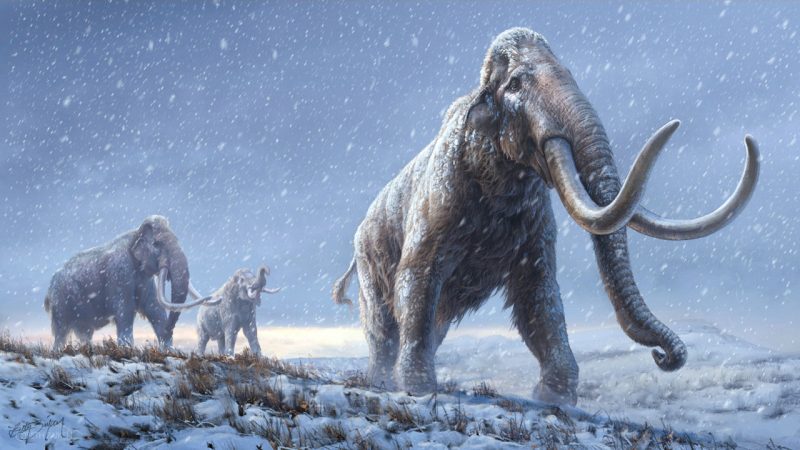Genetic material extracted from a 1.2-million-year-old mammoth tooth is the new record holder for the world’s oldest DNA. Researchers from the Centre for Palaeogenetics in Sweden have analyzed the DNA to conclude that it came from a previously unknown type of mammoth that has now been dubbed the Krestovka mammoth. The Krestovka mammoth is named for the area of Russia in which it was found, where it had been buried for more than a million years in the Siberian permafrost. This newly identified species of mammoth bridges the gap between the older Siberian steppe mammoths and the Columbian mammoths that populated North America.
A study published February 17, 2021, in the peer-reviewed journal Nature details the oldest DNA discovery in the mammoth, which would have walked Earth before the existence of humans or even Neanderthals. The previous record-holder for the oldest genomic data recovered were from a horse dated to approximately 780,000 years ago.

This 1.2-million-year-old mammoth tooth from the Krestovka mammoth is the source of the oldest DNA yet found.
Image via Stockholm University/ Pavel Nikolskiy.
In the 1970s, three ancient mammoths were discovered in Siberian permafrost. Recent analysis of the samples revealed the oldest of the three to have lived 1.2 million years ago. These creatures would have been alive during the Middle Pleistocene period, also known as the Chibanian. Scientists believe the Krestovka mammoth must have diverged from the older Siberian steppe mammoths more than 2 million years ago. This is the first evidence ever found of a different genetic lineage from the steppe mammoth.
Tom van der Valk of the Centre for Paleogenetics and lead author of the study said:
This came as a complete surprise to us. All previous studies have indicated that there was only one species of mammoth in Siberia at that point in time, called the steppe mammoth. But our DNA analyses now show that there were two different genetic lineages, which we here refer to as the Adycha mammoth and the Krestovka mammoth. We can’t say for sure yet, but we think these may represent two different species.

Tom van der Valk was the lead author on the paper identifying the oldest DNA yet found. Image via Centre for Palaeogenetics.
Scientists believe the newly identified Krestovka mammoths provided half of their DNA to North America’s Columbian mammoth, while woolly mammoths provided the other half. That makes the Columbian mammoth a hybrid of the two earlier types of mammoth.

Artist’s concept of mammoths that walked the Earth more than a million years ago. Image via Science/ Beth Zaiken/ Centre for Palaeogenetics.
By comparing the genome of mammoths over a span of a million years, researchers have been able to investigate the slow evolution and adaptations to life in cold Arctic conditions. The gene variants such as hair growth, thermoregulation, fat deposits, cold tolerance and circadian rhythms were already present in the earlier mammoths.
The researchers are hoping to eventually find DNA from other ancient animals, possibly from as long as 2.6 million year ago. That age is a limit where the researchers will hit a wall because that’s when permafrost started. Earlier than 2.6 millions years ago, it wouldn’t have been cold enough to preserve the kind of samples that are now being recovered.
Bottom line: The new record holder for the world’s oldest DNA comes from a newly discovered species of mammoth.
Source: Million-year-old DNA sheds light on the genomic history of mammoths

"light" - Google News
February 28, 2021 at 08:00PM
https://ift.tt/2MvpdEK
World’s oldest DNA sheds light on mammoth evolution - EarthSky
"light" - Google News
https://ift.tt/2Wm8QLw
https://ift.tt/2Stbv5k
Bagikan Berita Ini














0 Response to "World’s oldest DNA sheds light on mammoth evolution - EarthSky"
Post a Comment